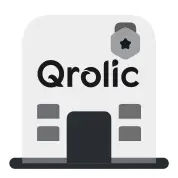Did you know that the old approach to building websites is gradually being replaced by something new and innovative? It’s called the headless Content Management System style, and it’s gaining a lot of attention online. And guess what? WordPress is in on the action too! By making use of a decoupled approach, WordPress becomes an even more powerful tool for high-traffic website owners. In this article, we’ll take a closer look at this approach and explore how it can benefit you as a website owner. So, buckle up, and let’s dive in!
Quick Summary:
- Headless WordPress separates content from design for websites.
- It greatly boosts speed, security, and scalability.
- Get consistent content experiences across all devices and new tech.
- Ideal for high-traffic websites needing future flexibility.
Table of Contents
- What is Headless WordPress?
- 5 Reasons You Should Switch to Decoupled WordPress
- 1. Performance and Speed:
- 2. Scalability and Resource Optimization:
- 3. Cross-Platform Consistency:
- 4. Future-Proofing with Emerging Technologies:
- 5. Security and content management:
- Additional points to choose the Headless WP:
- 1. Enhanced Developer Experience:
- 2. Improved Omnichannel Content Delivery:
- 3. Simplified Maintenance:
- Concrete Examples:
- Headless WordPress FAQs:
- Is Headless WordPress right for every website?
- What are the drawbacks of Headless WordPress?
- Does Headless WordPress offer better SEO compared to traditional WordPress?
- Are there security concerns with Headless WordPress?
- Conclusion
What is Headless WordPress?
This method involves decoupling the backend (content management) from the front-end (user interface) of a content management system which could lead to some enticing benefits for CMS like WordPress. By utilizing APIs to facilitate communication between the two ends, developers no longer have to use a rigid system, giving them the freedom to create unique and immersive user experiences. This approach is all about maximizing resource utilization and empowering developers to two into their creative juices. Exciting stuff, right?
5 Reasons You Should Switch to Decoupled WordPress
1. Performance and Speed:
The decoupled WordPress improves website performance and speed. By separating the front-end appearance and back-end content management, developers can optimize each component for blazing-fast loading times. This is crucial for keeping users engaged, especially on busy websites where every second counts. Sometimes the speed can cause a lot of issues, that need to be rectified immediately, if your WordPress website is running slow, you need to check the reason and apply our well-researched solution.
2. Scalability and Resource Optimization:
With a headless design, resource optimization, and scalability have been made easy. You can easily allocate resources vertically or horizontally, ensuring that website performance is not compromised even during unexpected spikes in demand. This adaptability is truly groundbreaking, especially for websites that experience varying degrees of visitor activity.
3. Cross-Platform Consistency:
Users can now access content from multiple devices and platforms, and thus maintaining a consistent user experience is crucial. Guess what? Decoupled WordPress can help you achieve just that! With this amazing platform, developers can easily customize the front-end for various platforms while keeping a consistent content back-end. This means that your brand experience can remain seamless across all channels, be it a website, mobile app, or any other emerging technology.
4. Future-Proofing with Emerging Technologies:
It can be hard to keep up with the trends in the online space. However, you can easily get acquainted with the new developments in the digital world and stay up-to-date with headless WordPress. The headless approach offers flexibility by integrating voice-activated interfaces, connecting with augmented reality, or embracing new front-end frameworks, making sure that you keep up with the new trends and ensuring your website remains relevant.
5. Security and content management:
Ever wondered about the most effective way for your high-traffic website to keep its content safe from malicious attacks? Well, you can try decoupling your WordPress website. This technique helps to minimize access to areas that can be attacked, making it harder for hackers to penetrate the system. Plus, it ensures that WordPress’s basic functions – managing content and data integrity – are still intact. By adopting this approach, websites can boost their overall security posture and protect themselves from criminal operations. A secured website is a gateway to smooth browsing, isn’t it? If you feel the security is tampered with or your website is hacked, these are the first 5 things you should do to save your website.
Additional points to choose the Headless WP:
1. Enhanced Developer Experience:
Headless APIs offer greater flexibility and control for developers, allowing them to choose their preferred front-end frameworks and tools. This leads to faster development cycles, cleaner code, and more innovative UI/UX possibilities.
2. Improved Omnichannel Content Delivery:
Decoupled content can be seamlessly integrated into various platforms beyond websites, such as mobile apps, wearables, smart TVs, and IoT devices. This creates a consistent brand experience across all touchpoints, reaching a wider audience and boosting engagement.
3. Simplified Maintenance:
Updates and bug fixes to the back-end content management system (CMS) won’t affect the front-end user experience, minimizing downtime and disruption for users. Additionally, headless architecture allows for easier scaling and deployment of new features.
Concrete Examples:
- Sony Music: Sony Music Entertainment migrated their global network of websites to a headless WordPress architecture. This resulted in a 40% reduction in page load times, improved SEO performance, and a more flexible platform for delivering personalized content experiences.
- Vogue: Vogue Italia utilized Headless WordPress to power their website and mobile app, allowing for dynamic content delivery based on user preferences and real-time trends. This resulted in higher engagement rates, increased ad revenue, and a more personalized experience for fashion enthusiasts.
- Nike: Leverages headless WordPress to power its SNKR Swoosh app, delivering personalized product recommendations and creating an engaging shopping experience.
Explore our article on planning your smart website budget.
Headless WordPress FAQs:
Is Headless WordPress right for every website?
Headless WordPress shines for high-traffic websites or those aiming for future-proof flexibility, personalized content delivery, and omnichannel consistency. However, simpler websites with limited front-end needs might find traditional WordPress sufficient.
What are the drawbacks of Headless WordPress?
The initial setup can be more complex and require developer expertise compared to traditional WordPress. Additionally, headless themes and plugins are a developing ecosystem, offering fewer options than traditional WordPress.
Does Headless WordPress offer better SEO compared to traditional WordPress?
Headless WordPress itself doesn’t directly impact SEO. However, its potential for faster loading times, mobile-friendliness, and dynamic content delivery can indirectly improve SEO performance.
Are there security concerns with Headless WordPress?
Decoupling the front end reduces the attack surface, potentially making headless WordPress more secure than traditional WordPress. However, proper security practices on both the back-end and chosen front-end frameworks are crucial.
Conclusion
Headless (decoupled) WordPress: Future of High-Traffic WebsitesAs the digital landscape continues to grow, high-traffic websites are facing the challenge of satisfying the increasing needs of their users. But fear not, my friend! The solution is here – Headless WordPress. Its impressive features such as speed, security, scalability, and flexibility make it the perfect choice for tackling future challenges. By decoupling the user interface (UI) from the content management system, websites with a high volume of traffic can unlock their full potential and provide users with an optimized experience across various platforms. So, it’s time to hop on the headless revolution bandwagon because the benefits are simply too good to ignore!
In search of a WordPress agency for that much-needed switch to a headless WordPress? You’re in the right place. Stay ahead of the game with Qrolic Technologies, we’ll convert your website and help you to stay up to date with the changing trends of technology. Contact us to get a quote.









